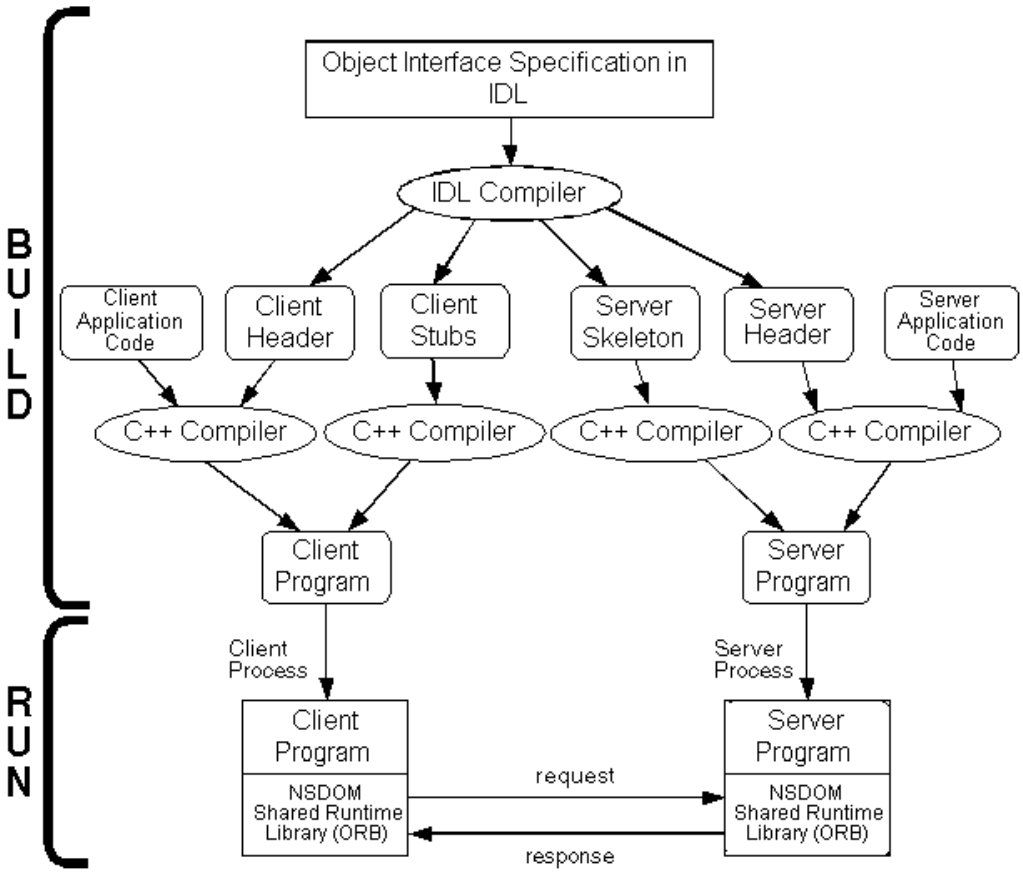CORBA 2.3.3 Programmer's Guide for C++ (NonStop CORBA 2.3.3+)
Table Of Contents
- CORBA 2.3.3 Programmer's Guide for C++
- Legal Notice
- Contents
- About This Guide
- Chapter 1. Introduction to NonStop CORBA Programming
- Chapter 2. NonStop CORBA Administrative Environment
- Chapter 3. Compiling and Building an Application
- Chapter 4. Deploying a NonStop CORBA Application
- Chapter 5. Tracing and Debugging Applications
- Chapter 6. Writing Scalable Applications
- Chapter 7. Managing Transactions
- Chapter 8. Writing Multithreaded Applications
- Chapter 9. Designing Advanced Applications
- Chapter 10. Porting CORBA Applications to NonStop CORBA
- Chapter 11. Writing Wrappers for Legacy Clients and Servers
- Appendix A. Architectural Walkthrough
- Appendix B. Object References
- Appendix C. Servant Reference Counting in NonStop CORBA
- Index

Define the CORBA object's interface in a CORBA Interface Definition Language (IDL) file.1.
Compile the IDL file using the NonStop CORBA IDL compiler. Compiling the IDL file will generate several files:
A header file to include in client programs that use the CORBA object.●
A client stub source file to be compiled and linked with client programs.●
A header file to include in the server that implements the CORBA object. Note that the server header, in turn,
includes the client header.
●
A server skeleton source file to be compiled and linked with the server program.●
2.
Create the client application:
The client application code uses the CORBA object, so it includes the client header file produced by the IDL
compiler.
●
Compile the client application code, producing an object file.●
Compile the client stub code produced by the IDL compiler, producing an object file.●
Link the two client application files (and any other object, library, or SRL files), to produce a client program.●
3.
Create the server:4.










